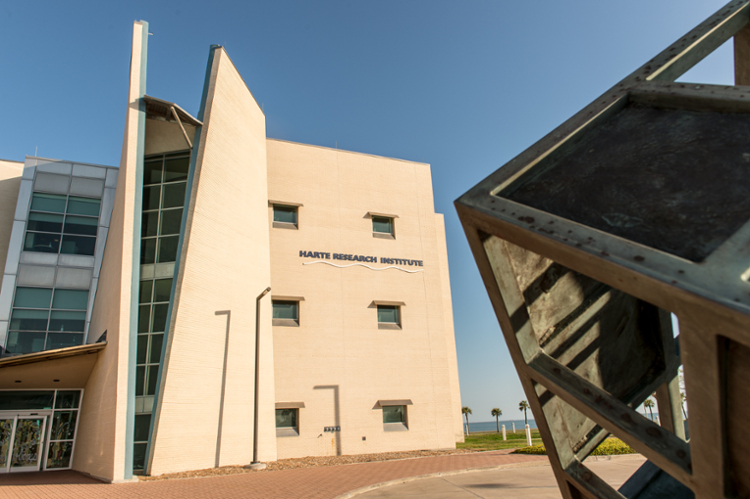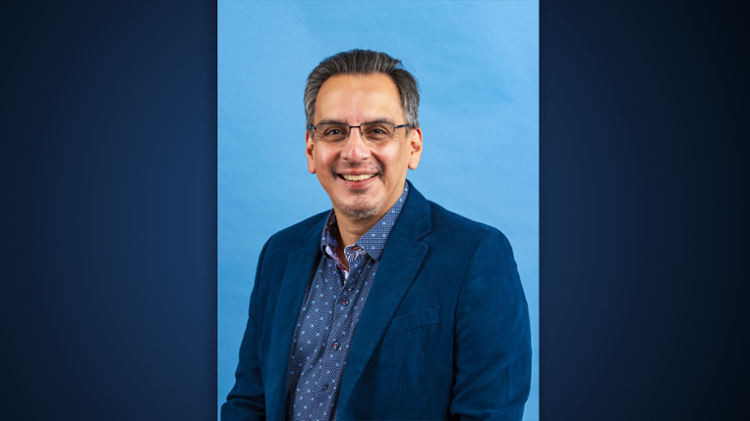Island University Targets Industrial Innovation, Engineering, and Public Safety with State-of-the-Art Scanning Lab
CORPUS CHRISTI, Texas – Rogelio “Roger” Benavides was 30 years old when he lost his life in an occupational accident at American Chrome & Chemicals Inc. in Corpus Christi on March 9, 1989. The Roy Miller High School graduate left behind his wife, Linda, and two sons, David and Paul.
In the wake of the family’s collective grief, they established a memorial chair in honor of the late family patriarch — the Rogelio “Roger” Benavides Memorial Chair for Industrial Safety — at Texas A&M University-Corpus Christi in fall 2000.
Today, the Benavides Memorial Chair is held by Dr. Hongwei Hsiao, TAMU-CC Professor of Engineering. After a lengthy career working for the National Institute for Occupational Safety in the Centers for Disease Control and Prevention conducting research in workplace and public safety, health informatics, and smart technologies and systems, Hsiao came to the Island University in 2022 to help build an industrial engineering program that trains managers who will emphasize job safety and health. A newer offering in the College of Engineering and Computer Science, the Bachelor of Science in Industrial Engineering program is set to have its first graduate cross the commencement stage in spring 2025.
“My research at TAMU-CC covers multi-system technology integration and design for human safety and health. This includes future protective gear, emerging human-robot communication, and wearable technology,” Hsiao said. “I particularly appreciate the Benavides family — they donated money to the university and built this endowment for industrial safety and human well-being. That really inspired me to come to TAMU-CC.”
Hsiao said U.S. workplace accidents involving Hispanic workers are near the top of the list when data is broken down by race or ethnic origin. According to the Bureau of Labor Statistics (BLS), the Hispanic and Latino worker fatal injury rate rose from 4.2 fatal work injuries per 100,000 full-time workers in 2019 to 4.5 in 2020. The fatal injury rates for White (non-Hispanic), Asian, and Black or African-American (non-Hispanic) workers all dropped from 2019 to 2020. BLS data also shows that fatal work injuries to Hispanic or Latino workers increased from 961 cases in 2018 to 1248 cases in 2022.
To accomplish his goal of reducing the number of workplace fatalities involving Hispanic or Latino workers among other related objectives, Hsiao has created the STAR Lab, which stands for Smart Technology Advancement Research, at TAMU-CC that will focus on industrial innovation, occupational safety, and public health.
The lab includes a novel piece of scanning equipment. The $450,000 system was constructed by 3dMD, a visionary maker of 3D and 4D-motion camera systems that have broad applications in areas such as health care, artificial intelligence, and wearable technology. The state-of-the-art system is equipped with 10 sets of temporal 3D cameras that capture a human subject’s exact dimensions in a tenth of second.
Hsiao said engineering majors in his human factors class have used the 3dMD system to learn how to conduct human body size and shape measurements as well as scanning. One of those students is Hoang Wong ’25, who is part of the first cohort of industrial engineering majors.
“Some of the highlights of the program have been working with physical anthropometric measurements, actually manipulating a robotic arm, and learning the control and dynamical system theory behind the robot,” Wong said.
George Hernandez ’24, a mechanical engineering major, has also used the 3dMD equipment.
“As part of the class, we had the opportunity to get scanned. Having a 3D representation of myself on the screen in a matter of seconds was pretty wild,” Hernandez said. “It goes to show that TAMU-CC is seriously invested in making sure students have access to amazing educational opportunities.”
Hsiao’s long-range goal is to develop and design personalized protective equipment (PPE) for diverse populations using scans of people from different backgrounds. In terms of the workforce, he notes that recent trends show increasing numbers of women workers in traditionally male-centered occupations, such as construction, fire response, law enforcement, and first responders who will require well-fit or customized PPE to safeguard their lives.
“I envision that eventually, we can have personal protective clothing that’s fully modularized or customized,” Hsiao said. “In other words, if we have enough data about diverse populations, one day, you can do a scan that will provide a precise fit. For pants for a regular person, if you are one or two inches off, it’s no big deal. But for firefighters, one or two inches off on protective gear can be a real problem.”
Hsiao is working with TAMU-CC post-doctoral researcher Dr. Hanwen Wang on a study on exoskeleton fit to diverse worker populations in which they plan to conduct full-body scans of 60 volunteers from the Coastal Bend — 30 men and 30 women of all shapes and heights. His team is also building a 3D full-body scan database of the Hispanic population for improved workplace design, PPE accommodation (such as fall-arrest harnesses, body armor, and protective clothing), and user-friendly equipment.
To learn more about participating in the scanning study, email Wang at hanwen.wang@tamucc.edu or call 919.607.3110.

















